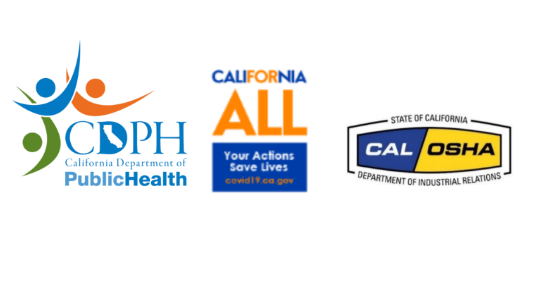Title Page
-
Conducted on
-
Prepared by
-
Location
Checklist
Contents of Written Worksite Specific Plan
-
The person(s) responsible for implementing the plan.
-
A risk assessment and the measures that will be taken to prevent spread of the virus.
-
Training and communication with employees and employee representatives on the plan.
-
A process to check for compliance and to document and correct deficiencies.
-
A process to investigate COVID-cases, alert the local health department, and identify and isolate close workplace contacts of infected employees until they are tested.
Topics for Employee Training
-
Information on COVID-19, preventing spread, and who is especially vulnerable.
-
Self-screening at home, including temperature and/or symptom checks using CDC guidelines.
-
The importance of not coming to work if employees have a frequent cough, fever, difficulty breathing, chills, muscle pain, headache, sore throat, the recent loss of taste or smell, or if they or someone they live with has been diagnosed with COVID-19.
-
When to seek medical attention.
-
The importance of hand washing.
-
The importance of physical distancing, both at work and off work time.
-
Proper use of cloth face covers.
Individual Control Measures & Screening
-
Symptom screenings and/or temperature checks.
-
Encourage workers who are sick or exhibiting symptoms of COVID-19 to stay home.
-
Encourage frequent handwashing and use of hand sanitizer.
-
Provide disposable gloves to workers using cleaners and disinfectants when required. Consider gloves as a supplement to frequent hand washing for other cleaning, tasks such as handling commonly touched items or conducting symptom screening.
-
Strongly recommend cloth face covers.
-
Close or increase distance between tables/chairs in breakrooms or provide break areas in open space to ensure physical distancing.
-
Communicate frequently to customers that they should use face masks/covers.
Cleaning and Disinfecting Protocols
-
Perform thorough cleaning in high traffic areas.
-
Frequently disinfect commonly used surfaces.
-
Clean and sanitize shared equipment between each use.
-
Clean touchable surfaces between shifts or between users, whichever is more frequent.
-
Equip customer entrances and exits, checkout stations, and customer changing rooms with proper sanitation products, including hand sanitizer and sanitizing wipes, and provide personal hand sanitizers to all frontline staff (e.g., cashiers).
-
Ensure that sanitary facilities stay operational and stocked at all times.
-
Make hand sanitizer and other sanitary supplies readily available to employees.
-
Use products approved for use against COVID-19 on the Environmental Protection Agency (EPA)-approved list and follow product instructions and Cal/OSHA requirements.
-
Adjust or modify store hours to provide adequate time cleaning and stocking with physical distancing.
-
Provide time for workers to implement cleaning practices before and after shifts, hire third-party cleaning companies.
-
Install hands-free devices if possible.
-
Encourage the use of debit or credit cards by customers.
-
Encourage customers with reusable bags to clean them frequently and require them to bag their own purchases.
-
Consider upgrades to improve air filtration and ventilation.
Physical Distancing Guidelines
-
Implement measures to physically separate people by at least six feet using measures such as physical partitions or visual cues (e.g., floor markings, colored tape, or signs to indicate to where workers should stand).
-
Minimize exposure between cashiers and customers. Where physical distancing cannot be maintained, use barriers such as Plexiglas. Where barriers are not feasible, strongly recommend that employees and customers wear face covers.
-
Use signage to remind customers of physical distancing at every opportunity.
-
Adjust in-person meetings, if they are necessary, to ensure physical distancing.
-
Place additional limitations on the number of workers in enclosed areas to ensure at least six feet of separation.
-
Stagger employee breaks, in compliance with wage and hour regulations, to maintain physical distancing protocols.
-
Close in-store bars, bulk-bin options, and public seating areas and discontinue product sampling.
-
Dedicate shopping hours for seniors and other vulnerable populations.
-
Increase pickup and delivery service options such as online ordering for curbside pickup.
-
Provide separate, designated entrances and exits.
-
Limit the number of in-store customers based on the size of the facility.
-
Be prepared to queue customers outside while still maintaining physical distance.
-
Encourage and train employees to practice physical distancing during pickup and delivery.
-
Make some locations pickup- or delivery-only to minimize physical interaction, if possible.
-
Install transfer-aiding materials, such as shelving and bulletin boards, to reduce person-to-person hand-offs where possible. Wherever possible, use contactless signatures for deliveries.
-
Expand direct store delivery window hours to spread out deliveries and prevent overcrowding.
-
Ask non-employee truck drivers, delivery agents, or vendors who are required to enter retail locations to have their employees follow the guidance of local, state, and federal governments regarding wearing masks.
Sign Off
-
Name and Signature




















